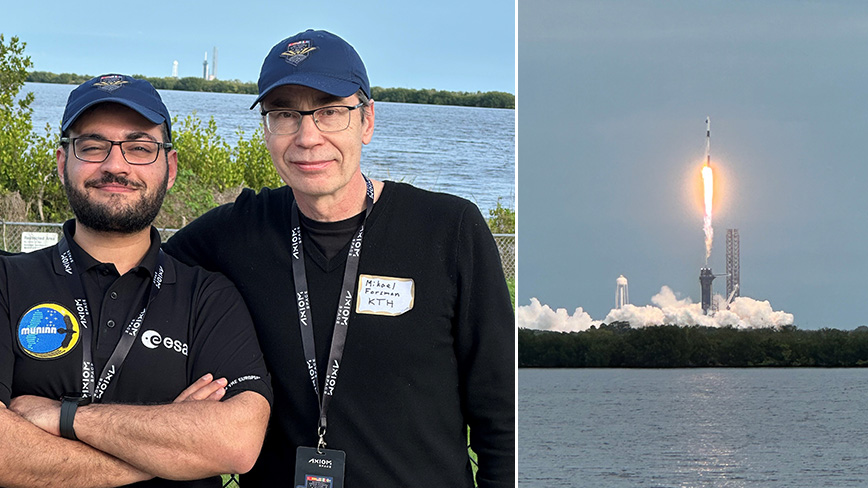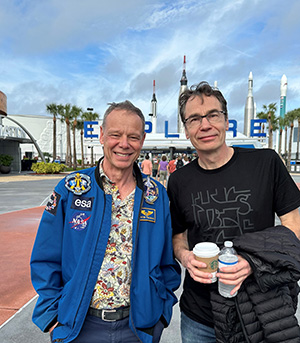“Witnessing the launch of the space capsule was incredibly powerful”

On 18 January, at 22:49 Swedish time, Marcus Wandt and the other astronauts of the Axiom 3 mission were launched into space from Kennedy Space Center, Florida. CBH researchers Mikael Forsman and Michail Magkos were there.
”You could hear the rumbling and you felt a tension in your whole body, and a relief when the rocket had disappeared above the clouds,” says Mikael Forsman.
Nobody can have missed the launch of Swedish astronaut Marcus Wandt, together with three other astronauts, from Kennedy Space Center in Florida on 18 January. After 36 hours of space travel, they docked with the International Space Station (ISS) on 20 January.

In a previous article we read about how KTH researchers Mikael Forsman and Michail Magkos will measure and analyse Marcus Wendt's stress, cognitive performance and brain activity during his time in space.
Mikael Forsman has just returned from Florida after accompanying the Swedish delegation, consisting of Marcus Wandt's family and friends, colleagues from SAAB, Swedish politicians, young people from Astronomisk Ungdom, the Swedish National Space Agency and representatives of some other Swedish authorities. They were invited by NASA via ESA (European Space Agency) and the Swedish Space Agency. Christer Fuglesang was also there, representing KTH.
Michail Magkos, who was also on the trip, is now in Cologne at the ESA office. From there, he can liaise with Marcus on the project if necessary.
“The Space Agency had made a great programme for us. On Sunday morning we had to take a bus to the hotel where Marcus was in intensive training for his stay in space. Since he was in quarantine, we only got to meet him at a distance, outdoors,” says Mikael Forsman.
“He was clearly happy to see us. Marcus is not only an engineer, pilot and astronaut, but also a very nice and sensitive person.”
Tests in space
“Marcus is now on the ISS space station. During his 13 days on the ISS, he will answer our survey questions on stress and sleep, and perform cognitive tests. There are three tests dealing with reaction time, short-term memory tests and a multitask test, where fuel tanks are filled and valves need to be opened and closed and several things can happen at the same time. The test is like a video game and is meant to be reminiscent of the operation of the space station. "We have already carried out tests on Marcus on the ground and will carry out more when, after landing outside Florida, he goes to Houston and a few days later comes to Cologne," says Mikael Forsman.
In addition to witnessing the departure, there was also a joint programme of lectures and round table discussions on space and the future, with shared meals. During one of the days, Mikael Forsman and Michail Magkos presented their project and a member of the audience was able to perform the cognitive tests that Marcus Wandt will carry out in space.
"Powerful to witness the launch"
“Witnessing the launch of the space capsule was incredibly powerful. It felt like we were close, but in fact we were five kilometres away. You could hear the rumbling and there was a sense of excitement and relief as the rocket disappeared above the clouds.”
During a visit to the Kennedy Space Centre, they met American astronaut Don Thomas, who has made four space flights. Don Thomas described the experience of seeing planet Earth from space.
"He said that if more people could go on a space journey and see our small planet far away, more people would realise that we have to take care of it," says Mikael Forsman.
See Mikael Forsman being interviewed on Swedish TV4.
Text: Åsa Karsberg
